What Do Bicycles Do At Crosswalks?
The Bike Czar explains what cyclists, drivers and pedestrians should do when they encounter a crosswalk.
I recently got this question from a Wisconsin Bike Federation member, and it touches on what I think is a poorly understood, but very important traffic safety concern:
Dave,
I noticed this crosswalk law mentioned in a story and wondered what it means for bicyclists? Are you familiar with this law?“Wisconsin’s pedestrian “right-of-way” law, or Statute 346.24 reads, Crossing at uncontrolled intersection or cross-walk. (1) At an intersection or crosswalk where traffic is not controlled by traffic control signals or by a traffic officer, the operator of a vehicle shall yield the right−of−way to a pedestrian, or to a person riding a bicycle or electric personal assistive mobility de-vice in a manner which is consistent with the safe use of the cross-walk by pedestrians, who is crossing the highway within a marked or unmarked crosswalk.
(2) No pedestrian, bicyclist, or rider of an electric personal assistive mobility device shall suddenly leave a curb or other place of safety and walk, run, or ride into the path of a vehicle which is so close that it is difficult for the operator of the vehicle to yield.
(3) Whenever any vehicle is stopped at an intersection or crosswalk to permit a pedestrian, bicyclist, or rider of an electric personal assistive mobility device to cross the roadway, the operator of any other vehicle approaching from the rear shall not overtake and pass the stopped vehicle.”
As part of the Bike Fed’s statewide Share & Be Aware Program, our staff work with driver education instructors from around the state and do direct outreach to educate people about the rules of the road regarding the interaction between different road users: people walking, bicycling and driving motor vehicles. Through that experience, we have learned that some of the least understood laws are those regarding sidewalks and crosswalks, particularly when it comes to definitions and right of way.
Bicycles will also be in crosswalks where multi-use paths intersect with streets. The Hank Aaron State Trail does this at a number of marked and unmarked crosswalks at uncontrolled intersections in Milwaukee. The Glacial Drumlin crosses a number of rural roads with unmarked crosswalks and no traffic control.
It sounds basic, but let’s back up and remind ourselves what a crosswalk is, where we find crosswalks and how they vary. To help, I had the diagram below created. In it you can see marked crosswalks, unmarked crosswalks and people in crosswalks at different points of crossing.
A crosswalk is defined in statute 340.01(10):
(10) “Crosswalk” means either of the following, except where signs have been erected by local authorities indicating no crossing:
(a) Marked crosswalk. Any portion of a highway clearly indicated for pedestrian crossing by signs, lines or other markings on the surface; or
(b) Unmarked crosswalk. In the absence of signs, lines or markings, that part of a roadway, at an intersection, which is included within the transverse lines which would be formed on such roadway by connecting the corresponding lateral lines of the sidewalks on opposite sides of such roadway or, in the absence of a corresponding sidewalk on one side of the roadway, that part of such roadway which is included within the extension of the lateral lines of the existing sidewalk across such roadway at right angles to the center line thereof, except in no case does an unmarked crosswalk include any part of the intersection and in no case is there an unmarked crosswalk across a street at an intersection of such street with an alley.
The designs and patterns of paint, colored pavement or pavers varies for marked crosswalks, but most crosswalks are unmarked, with no paint, like most residential side streets in cities, towns and villages. The most important take-away from this is that a crosswalk exists between two sidewalks on any street is crosswalk, whether it is marked with paint or not.
Crosswalks can be found at controlled intersections (those with stop or yield signs or traffic signals) or at uncontrolled intersections with no signs or signals to define right of way. At signalized intersections, of course people are required to obey the signal. The confusion comes in at uncontrolled intersections. I’ll try to answer the most common questions below, and how they relate to people on bicycles as well as people walking.
When can a person start crossing the street at an uncontrolled intersection? As statute 346.24(2) states, “suddenly leave a curb or other place of safety and walk, run, or ride into the path of a vehicle which is so close that it is difficult for the operator of the vehicle to yield.” What that means is that you can begin crossing a street at a crosswalk as long as approaching vehicles have time to stop. On an urban street with posted limits of 25-30 miles per hour, you can safely begin to cross the street if the approaching vehicles are about half a block away. At 25 mph, the stopping distance (including thinking time to recognize the need to stop) is only 25 feet. A city block is about 300 feet long, so if you start crossing a typical 50ft wide arterial street with approaching traffic 150 feet away, you have every reason to assume they will yield the right of way to you, whether you are on a bicycle or walking.
When is a person in a crosswalk if there are no lines? A person is in a crosswalk as soon as they put a foot off the curb or their bicycle wheel breaks the plane of the vertical curb face. That means that if someone is standing with one foot in the road and the other on the curb, approaching motor vehicle traffic is required to allow them to cross, which may involve slowing or stopping.
The problem is that many people walking or riding bicycles wait until the road is completely clear of traffic rather than begin crossing when they can safely expect oncoming traffic to yield. This is a problem not only because at peak hours or on high-volume roads, this can mean a long wait at the curb, but because it conditions people in motor vehicles that they don’t have to let people cross the road. Sometimes when I stop for someone waiting in the crosswalk, they even wave me on. While that is their right to wait, again, it sends the wrong message about each of our responsibilities to obey the law and share the road with other users. Because so many people are timid pedestrians, we have developed a driving culture in Wisconsin in which the norm is people don’t yield to pedestrians. That is not the case in other places, like Seattle or even car crazy Los Angeles.
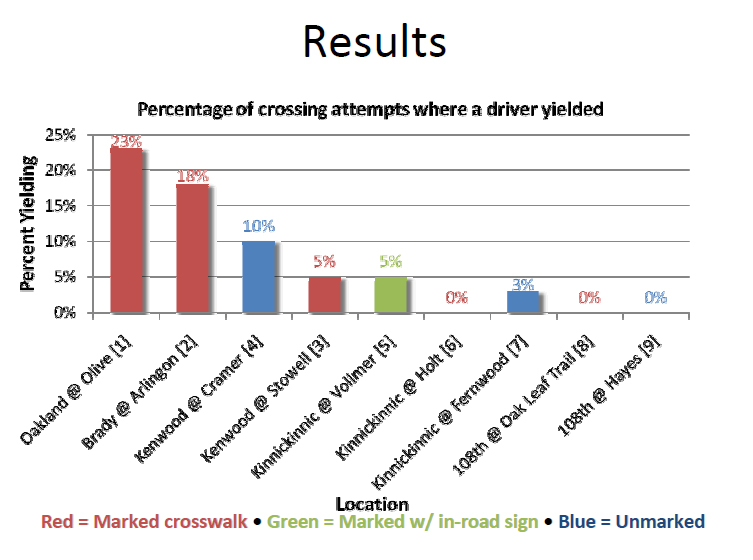
These results from traffic studies done in Milwaukee show that the percentage of people who yield to pedestrians at crosswalks is very low. At some crosswalks, nobody will stop.
We would all be safer and better off if everyone obeyed the rules of the road, and people at crosswalks were cautiously assertive. Here is how I cross a street, whether riding a bicycle on the Hank Aaron State Trail on my way to a meeting or walking to a restaurant in my neighborhood. I make a point to look for cross traffic well in advance of the crosswalk and if it appears that approaching vehicles in both directions have adequate time and distance to stop, I keep my forward travel speed consistent. I don’t hesitate at the curb, and enter the crosswalk very purposely. At the same time I keep an eye on approaching traffic in case vehicles don’t appear they are going to yield.
This technique works very well, and I rarely have problems crossing a street. I also think it is more fair to people in motor vehicles because my behavior is clear and consistent with the rules of the road. When people do have to slow or stop to let me cross, I smile and wave thanks to them. On the rare occasion when someone in a car honks at me, I motion with both arms at the crosswalk between the two sidewalks and keep moving.
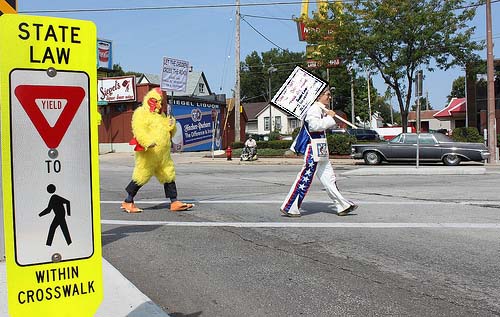
Why did the chicken cross the road? To get to the other side of course. You shouldn’t have to be a daredevil to cross the street when state law is very clear. – Photo by Dave Schlabowske
On very few occasions, I have even been honked at when crossing by one of the in-street signs that says “State Law: Yield to Pedestrians within Crosswalk,” so if it happens to you, don’t get mad. Our culture of driving in the midwest is changing, but there are still a lot of people behind the wheel who get angry any time they have to use their brake pedal. You can help that culture continue to improve by taking a cautiously assertive approach to crossing streets at crosswalks.
Remember, it is nice to be right, but you don’t want to be dead right.
To request a S&BA Ambassador to come to your community and teach a pedestrian class, visit http://wisconsinbikefed.
Bike Czar
-
Join a Bike Ride Under the Polish Moon
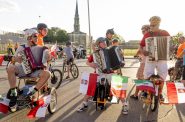 Jun 1st, 2018 by Dave Schlabowske
Jun 1st, 2018 by Dave Schlabowske
-
9 Reasons to Join National Bike Challenge
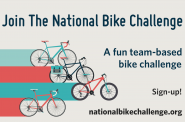 May 4th, 2018 by Dave Schlabowske
May 4th, 2018 by Dave Schlabowske
-
Biking Through the Mindoro Cut
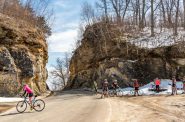 Apr 27th, 2018 by Dave Schlabowske
Apr 27th, 2018 by Dave Schlabowske


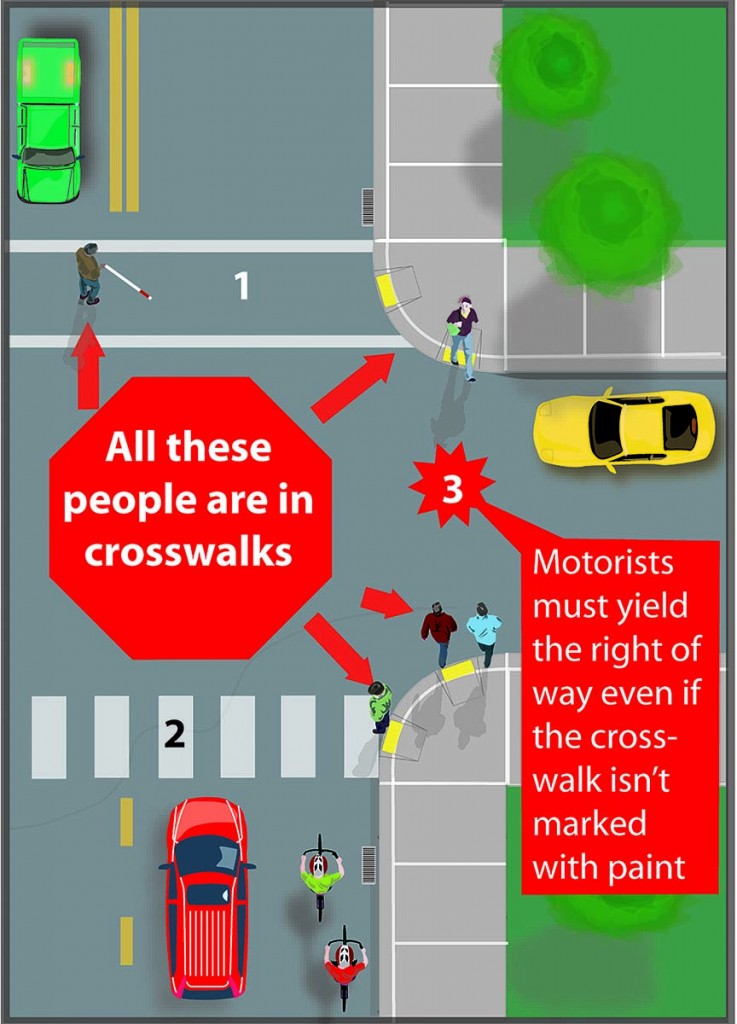
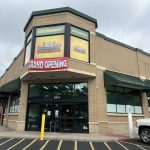



















I ride my bike, walk and travel frequently by car. I live on the Eastside so I do all these things regularly. All three groups are equally guilty of breaking the rules. Pedestrians of all ages walk right up to the crosswalk, stop and start to text. They also cross midblock while texting or talking on their phons. They make no attempt at making eye contact with the drivers around them. If you stop, they won’t even notice you. Bicyclists are all over the place. Many don’t have lights and ignore every road rule there is. Cars are by far the worst. NO ONE stops at crosswalks, marked or otherwise, other than maybe Brady Street. I stopped on Commerce Street the other day to let a man and his puppy cross. I almost caused a five car pile up because people tailgate and drive way too fast.
The problems are cused by speed. We need 20 MPH zones. Cars will stop because speeds are slower and they are more aware when traveling at slower speeds. I would create buffers and enforce speed zones. North Ave-Oakland-Farwell Avenues is the perfect place to start.
A driver’s failure to yield is a big pet peeve of mine simply because that driver is the road user who poses the greatest threat to all others (realistically the ONLY threat).
@David: I like the idea of a more restricted speed limit. How about we also devote a small portion to police time to ticketing drivers who fail to yield to drivers. Maybe even a single patrol-shift of an officer once a week who would pick a heavy traffic/pedestrian intersection and stake it out. This would be a negligible impact on the overall police presence (I’ aware there are plenty of other issues), but even a few tickets would go a long way to make drivers aware.
Also, at several local intersections where one street with a stop sign meets another without a stop sign, there is a second sign below Stop that reads “Cross Traffic Does Not Stop.” While that may be the case in reality, the sign is wrong according to this statute. How about changing them to “Cross Traffic Does Not Stop, Except for Pedestrians?”
A crosswalk to a Milwaukee driver is like a red cape to a bull. As a pedestrian, I have had drivers actually *speed up* as I crossed, apparently to teach me some kind of lesson by coming close to me at a high rate of speed. This contrasts strongly to other cities where I have lived—the difference being that in those cities, citations are actively handed out to both drivers and pedestrians who provoke dangerous situations.
It seems unfair that drivers in warm cars should press their advantage over a pedestrian trying to reach his destination on foot on a windy winter day. But that’s the way it is here. The Midwestern friendliness evaporates behind the wheel.
is a bicylist on a roadway or bike path required to press the walk signal when riding into the crosswalk if they have the green light
Hi Jon, call buttons are needed either to change the cycle to get a walk signal when there is no vehicle over the magnetic loop detector. To get a “Walk” signal in those situations you need to press the call button. Sometimes though an intersection can be programmed so the lights change on a regular cycle or when vehicles disturb the magnetic loop, but the walk signal only changes to “Walk” if the call button is pressed, even when the vehicle signal goes green. In those situations, if you are using a crosswalk, you should press the call button.
There is also a law that allows bicycles and motorcycles to proceed through a red light when it is safe to do so if the signal does not detect them after waiting 60 seconds. That law doesn’t match well with traffic engineering though, because often signals are set to a 90 second cycle. So I advise people to wait a little longer than a minute before running a red light.